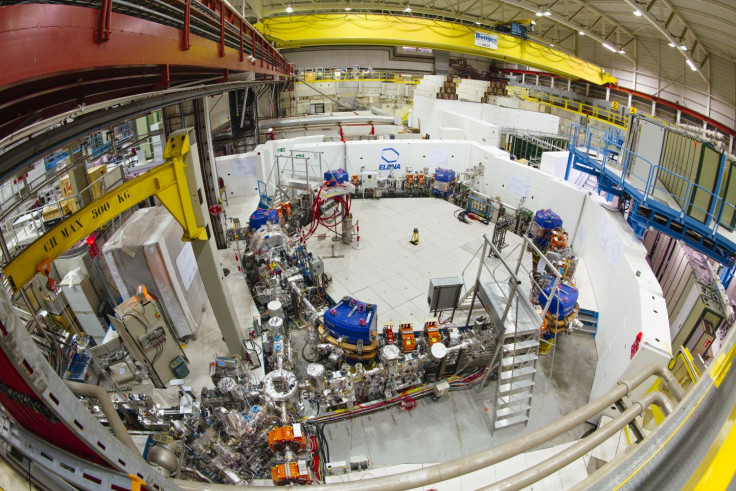CERN Installs New Machine To Decelerate Antimatter Particles

When the Big Bang occurred roughly 13.8 billion years ago, equal quantities of matter and antimatter were created — at least that’s what our current theoretical models tell us. The problem is, matter and antimatter particles annihilate each other when they come in contact. This means if our understanding of the universe is correct, it should not exist at all.
Obviously, as attested by the fact that the universe, and we along with it, exists, there is something fundamentally incomplete — if not outright wrong — in our theories that describe reality. Either significantly more matter was created by the Big Bang, or there is an as-of-yet-undiscovered asymmetry between matter particles and their antimatter counterparts.
If this asymmetry — known as Charge, Parity, Time Reversal (CPT) violation in physics jargon — does exist, the only way to detect it would be to create and observe antimatter particles.
Experimental physicists at the European Organization for Nuclear Research have long been doing exactly that, and now CERN has installed a new instrument to decelerate antimatter particles — a key prerequisite in the study of the antimatter sector.
The slower the particles — in this case, antiprotons — the easier it is for experiments to study or manipulate them.
The new machine — Extra Low Energy Antiproton (ELENA) — is just over 31 feet in diameter, and has now begun first tests with low-energy beams.
“The ELENA deceleration ring will be connected to the Antiproton Decelerator, which has been in service since 2000. The AD is a unique facility that enables the study of antimatter, with the aim of unlocking its many mysteries,” CERN explained in a statement released Monday. “Coupled with the AD, this small ring will slow the antiprotons down even further, reducing their energy by a factor of 50, from 5.3 MeV [megaelectronvolts] to just 0.1 MeV. In addition, the density of the beams will be improved. The experiments will be able to trap 10 to 100 times more antiprotons, improving efficiency and paving the way for new studies.”
Several experiments at CERN are already dedicated to the study of antimatter and its properties. The installation of the new machine comes just days after researchers associated with the ASACUSA, or the Atomic Spectroscopy And Collisions Using Slow Antiprotons, collaboration at CERN reported a new precision measurement of the mass of an antiproton relative to that of an electron.
“ELENA is expected to operate for at least 10 years and be exploited by a user community consisting of six approved experiments,” CERN said. “This will take physicists towards the ultimate goal of performing spectroscopy on antihydrogen atoms at rest, and also to investigate the effect of gravity on matter and antimatter.”
© Copyright IBTimes 2024. All rights reserved.






















